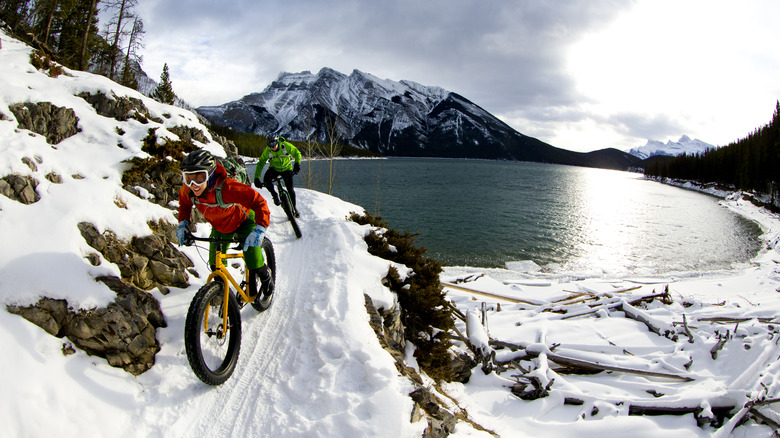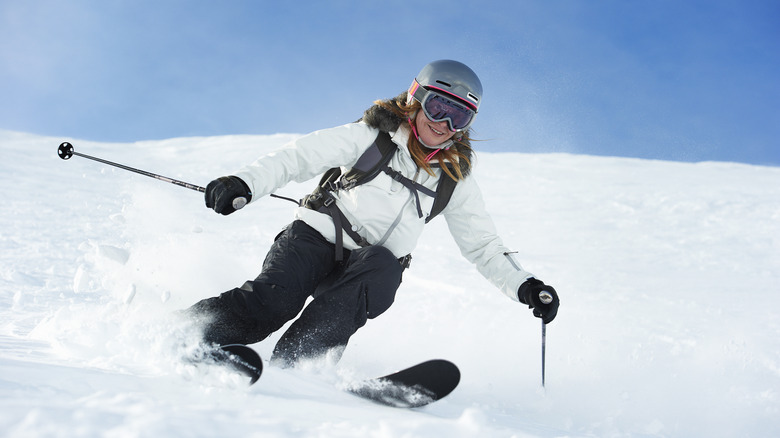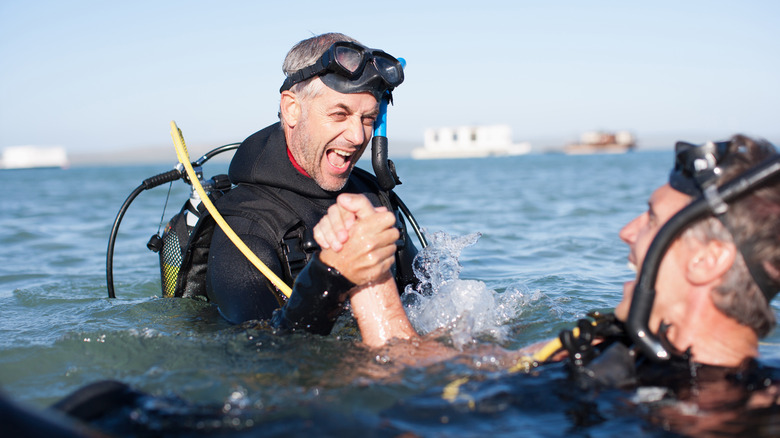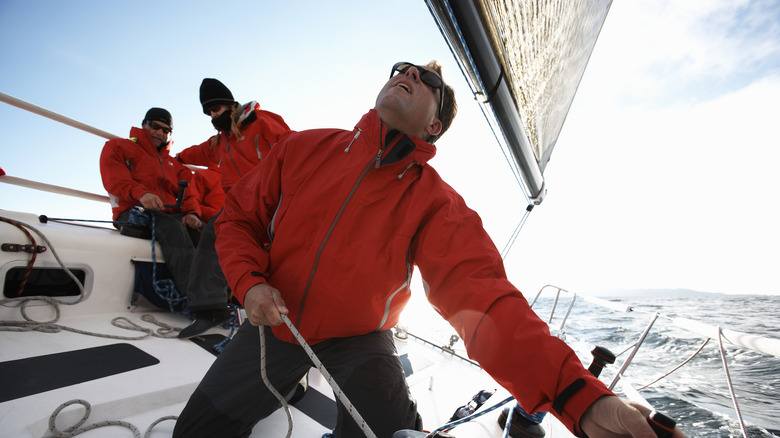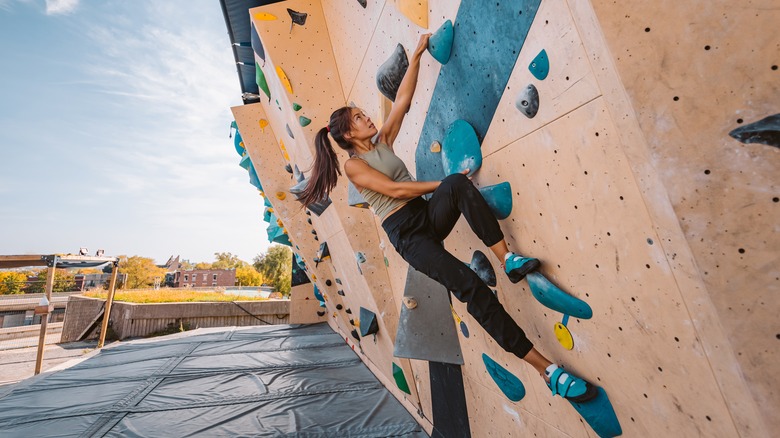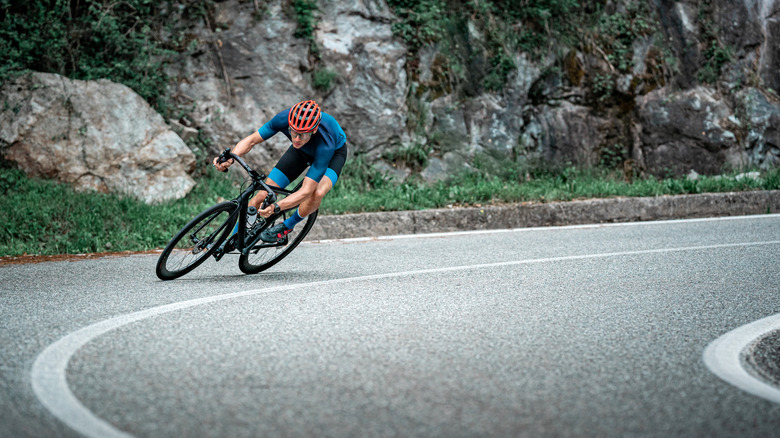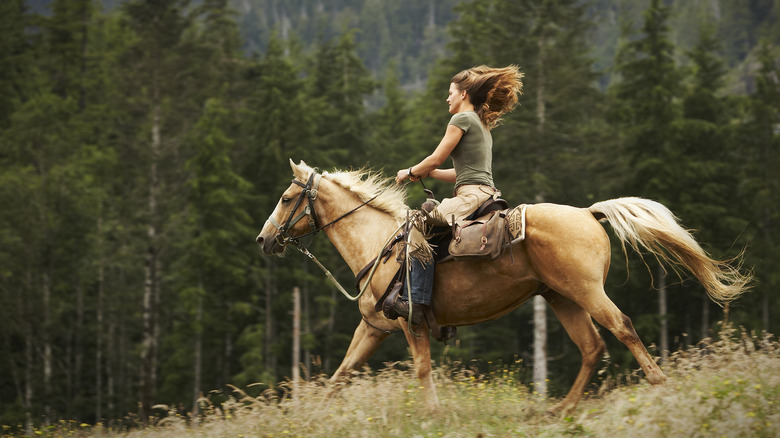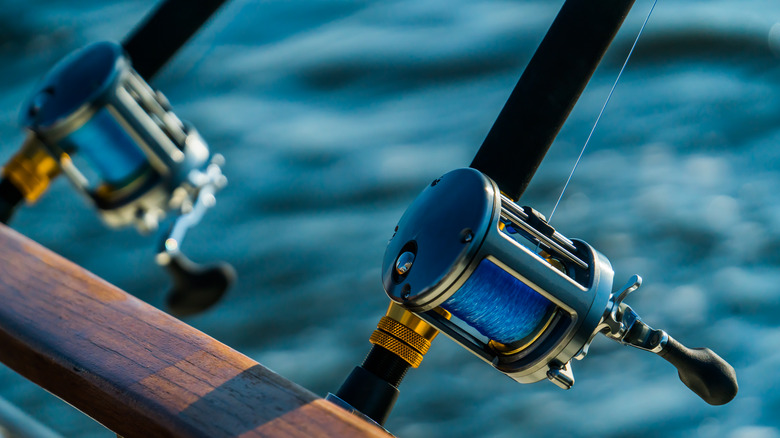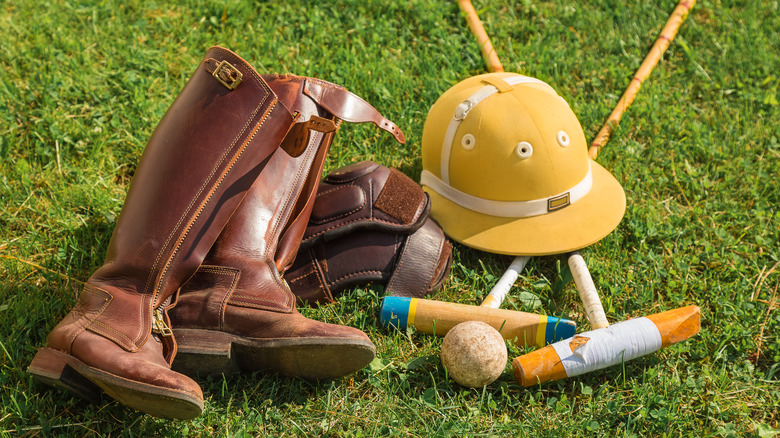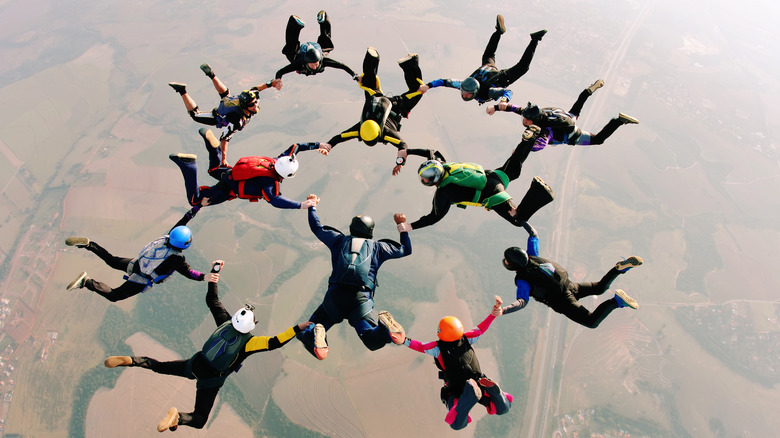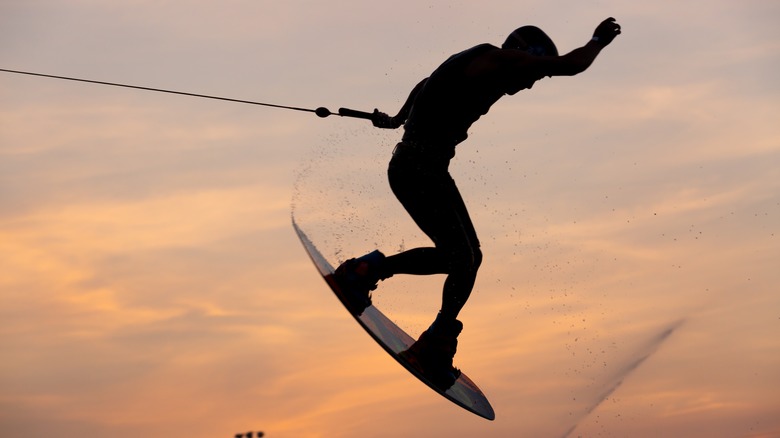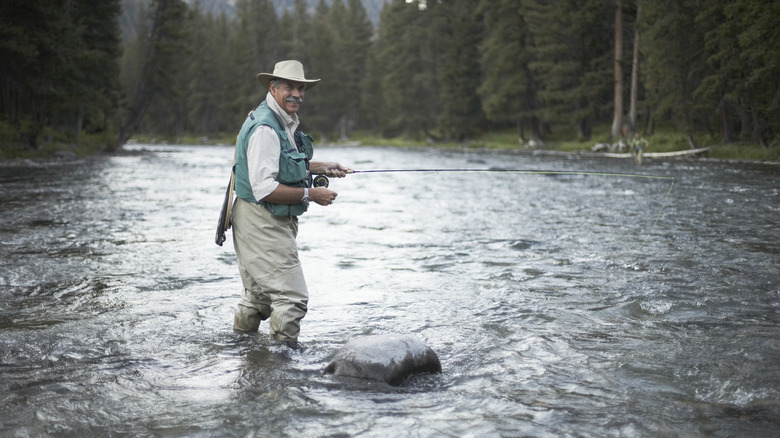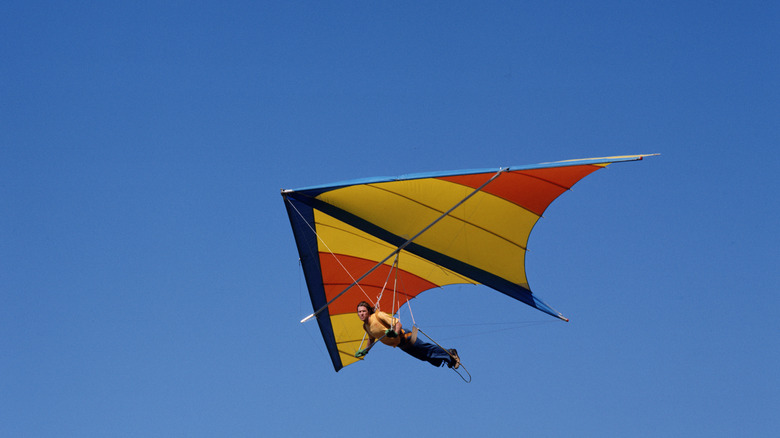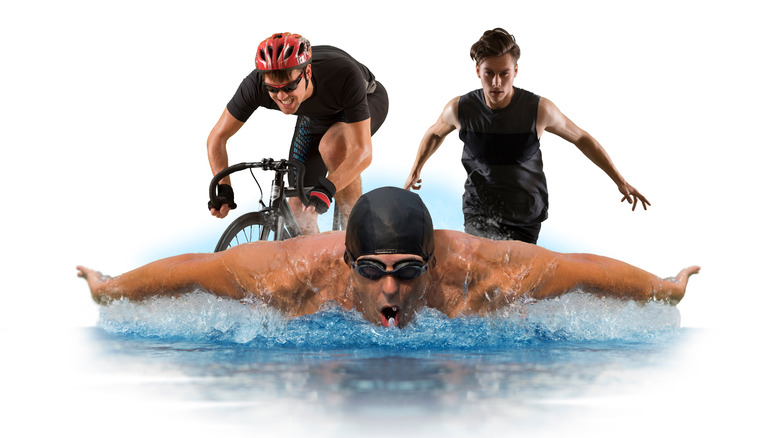Outdoor Sports That Cost More Than You Think
Outdoor sports and activities bring adventure, thrill, and the promise of unforgettable experiences. The expansive landscapes, whether mountainous terrains, open waters, or blue skies, provide the perfect canvas for these pursuits. Often, the initial attraction is rooted in the belief that engaging in these activities can be a relatively affordable escape, accessible to all who seek a break from the routine.
However, as enthusiasts delve deeper into their chosen outdoor pursuits, the veil of affordability starts to lift. Beyond the scenic landscapes and adrenaline-pumping moments lie the often-unseen financial commitments associated with these pursuits. For each outdoor activity, the financial journey becomes as much a part of the experience as the thrill of the pursuit itself.
So today, we aim to shed light on the true costs of these outdoor pursuits, offering insights into the investments required for gear, training, travel, and the pursuit of passion in the great outdoors. Join us as we navigate the financial landscape of some outdoor sports, uncovering the intricate details that often elude the surface appeal. Whether you are a seasoned enthusiast or an aspiring adventurer, this comprehensive guide will help you navigate the financial aspects of your chosen outdoor pursuit and ensure that the thrill of the experience is complemented by a well-informed understanding of its associated costs.
Golf
Golf attracts enthusiasts with its serene landscapes and the perception that it can be a relatively affordable pastime. The misconception surrounding the affordability of golf may stem from the public availability of municipal courses with affordable green fees, where casual players can enjoy a round without breaking the bank. Additionally, the image of a lone golfer with a basic set of clubs may contribute to the belief that the sport is cost-effective.
However, this perception overlooks the fact that serious engagement in golf comes with significant financial commitments. The initial investment in quality golf clubs, balls, and proper footwear can itself be substantial. GolfLink says that a complete set of clubs can cost close to $400. Additionally, green fees for playing at well-maintained courses, which offer a more enjoyable experience, can run anywhere from $25 for a walk-in to $100 for a complete 18-holer. GolfLink estimates that startup costs for golf average at about $800. That's not even including membership fees at exclusive golf clubs which can reach exorbitant levels, especially when factoring in initiation fees and annual dues. Even cheaper country clubs will run you out thousands over the course of a year.
Moreover, the sport demands ongoing investment in accessories, golf apparel, and regular equipment upgrades to keep up with technological advancements. As golfers seek to enhance their skills and play on renowned courses, the cumulative costs of this seemingly genteel sport can add up over time, making it a far more expensive pursuit than it might appear at first glance.
Skiing
Skiing is an exhilarating and picturesque winter activity, drawing enthusiasts with the allure of snow-covered landscapes and the notion that it can be a reasonably priced winter pastime. According to Outdoor Master, the misconception about the affordability of skiing may arise from the availability of budget-friendly ski resorts and the option to rent equipment for occasional outings. The image of a casual skier hitting the slopes with rented gear may contribute to the belief that skiing is cost-effective.
However, this perception obscures the substantial financial commitments that serious involvement in skiing entails. Never mind the distance that one must usually travel to access slopes. After all, how many of us are lucky enough to live right by snowy-mountain covered tops? Flight and driving costs are factored into overall ski expenses for beginners and experts alike. High-quality skis, boots, poles, and specialized clothing can incur significant upfront costs. Even renting at ski resorts will put one out up to $100 a day. Lift tickets for access to well-maintained ski resorts and accommodations at popular skiing destinations add to the overall expense, costing between $50 to $250 for day passes.
Furthermore, as skiing enthusiasts progress in skill and seek more challenging terrain, the need for advanced equipment and access to renowned slopes can drive costs higher. Taking into account all of these extraneous costs, it's estimated that a single ski holiday can cost a person up to $700.
Scuba diving
Scuba diving attracts enthusiasts with the allure of exploring the ocean's mysterious depths. When on holiday by the beach, vacationers often build misconceptions about the availability of entry-level scuba diving experiences and rental equipment for casual divers. Plus, the image of individuals leisurely exploring vibrant coral reefs with minimal gear might contribute to the belief that scuba diving is a cost-effective pursuit.
However, according to Scuba Diving Smiles, this perception overlooks the significant financial commitments associated with serious involvement in the sport. Obtaining a scuba diving license adds both time and cost. An average certification costs an aspiring diver around $300 and requires enthusiasts to learn essential skills, safety procedures, and underwater knowledge. This is true even if more affordable travel destinations, like Mexico. Beyond the certification, purchasing diving gear, including regulators, tanks, wetsuits, and masks, constitutes a substantial initial investment. While renting may be possible in rare circumstances, most instructors will require learners to purchase their own equipment for hygiene and safety reasons. Even the cheapest set of gear will cost close to $250.
Once you've been certified, each underwater trip will cost you around $100 for a two-tank boat dive. Additionally, the cost of travel to desirable dive locations further contributes to the overall expense. Redditor jlcnuke1 calculates that after the initial investment of about a grand, divers spend about $500 per year on diving and associated costs.
Sailing
Sailing is often idealized as a serene and graceful outdoor activity, drawing enthusiasts with the promise of harnessing the power of the wind and the perception that it can be a reasonably affordable maritime pursuit. This misconception may stem from the availability of basic sailing experiences on small boats and the image of individuals gracefully navigating calm waters. The simplicity of a lone sailor with a modest boat might contribute to the belief that sailing is a cost-effective pastime.
Owning or even renting a sailboat incurs costs for maintenance, storage, and mooring fees. According to cbulger from Sailing Anarchy, the initial investment in the boat itself can cost thousands of dollars — if one plans to purchase their own boat. Even renting can add up to the same, according to Life of Sailing. As sailing enthusiasts progress to larger vessels or seek to participate in competitive racing, the costs escalate further. Quality sails, navigation equipment, safety gear, and ongoing maintenance contribute to the overall financial investment.
Additionally, the allure of exploring diverse sailing destinations and participating in regattas can significantly increase the budget required. Many sailors choose to live on their boats for extended periods, converting their boats into homes and their hobbies into lifestyles.
Rock Climbing
Rock climbing draws enthusiasts with the excitement of scaling vertical rock faces and the perception that it can be a relatively inexpensive activity. And initially, it often isn't. Introductory experiences, including day passes and rental gear, often chalk up to $30 or $40 (via CLIMB).
However, while basic indoor climbing can be affordable, advancing to outdoor climbing or more challenging routes requires the purchase of specialized equipment such as ropes, harnesses, carabiners, and climbing shoes. Essential climbing gear can run up to $400. Not to mention that indoor climbing gym memberships and guided outdoor climbs also contribute to the overall expense. Furthermore, for those venturing into traditional outdoor climbing, the need for protective gear like helmets and additional safety equipment increases costs.
As climbers progress to tackle more ambitious peaks or travel to renowned climbing destinations, the expenses for travel, accommodation, and permits can escalate. While the allure of rock climbing may initially seem approachable, the reality is that deeper involvement in this exhilarating sport can result in a significant financial investment.
Road Biking
Road biking is often embraced as a fast-paced and stimulating outdoor activity, attracting enthusiasts with the thrill of covering long distances on two wheels and the perception that it can be a relatively affordable sport. This misconception may stem from the accessibility of entry-level road bikes and the simplicity of hitting the road for a casual ride. All you need is a bike and a helmet, right?
Elly Blue from Bicycling states that the misconception that road biking is a cost-effective pursuit often results from images of individuals cruising through scenic landscapes with basic gear. In reality, one can't just take their everyday bicycle out on long expeditions without risking damage or injury. High-quality road bikes, designed for speed and efficiency, can come with a hefty price tag, often a few hundred dollars. Additionally, the need for essential biking gear, including helmets, cycling shoes, and specialized clothing, adds to the initial investment, bringing up the average total to $700 for most bikers. Regular maintenance, replacement parts, and accessories like bike computers or hydration systems contribute to ongoing costs, especially for novice bikers who may not know how to perform maintenance themselves.
As road cyclists aim for more challenging routes, the financial commitment to the sport increases. While road biking may seem accessible to beginners, the reality is that dedicated enthusiasts often find themselves making considerable long-term investments in pursuit of an enhanced cycling experience.
Horseback Riding
Horseback riding is romanticized as a majestic and timeless outdoor activity, drawing enthusiasts with the connection to nature and the perception that it can be an attainable equestrian pursuit. However, this beauty conceals some pretty ugly costs.
Owning a horse involves substantial costs, according to Farmhouse Track. The initial purchase price can vary widely depending on factors such as breed, age, and training. Some horses may cost a whopping $60,000. Additionally, ongoing expenses include boarding fees, feed, veterinary care, farrier services, and necessary equipment like saddles, bridles, and grooming tools adding another $10,000 per year on average. Regular veterinary check-ups, vaccinations, and dental care are essential aspects of responsible horse ownership, contributing to the overall cost. Riding lessons or professional training may also be necessary to develop your riding skills and bond with your horse effectively, and those cost a pretty penny as equestrians are hard to come by.
For those who don't own a horse, riding can still be pursued through lessons and rental programs. Riding lessons often include the use of a well-trained school horse, eliminating the need for personal ownership responsibilities. However, even in this scenario, the cost of lessons, equipment, and occasional trail rides can accumulate. While horseback riding can offer a unique and rewarding experience, it's crucial for enthusiasts to be aware of the comprehensive commitment involved in owning and caring for a horse. Responsible horse ownership requires not only a financial investment but also a dedication of time, energy, and knowledge to ensure the well-being and happiness of the equine companion.
Deep-Sea Fishing
Deep-sea fishing is often portrayed as an exhilarating and rewarding maritime adventure, attracting enthusiasts with the promise of bountiful catches and the perception that it can be a relatively straightforward and cost-effective pastime. However, this notion overlooks the various expenses associated with serious involvement in the sport.
The primary costs of deep-sea fishing include chartering a boat as well as purchasing or renting high-quality fishing gear. Charter fees can vary depending on the trip's duration, the boat's size, and the amenities provided. According to Fishing Orange Beach, party boat charters, the lowest financial commitment, cost between $69 and $125 per person — not including fish cleaning and tips. Renting a private charter can run you between $1,450 and $1,800, depending on the size of the vessel, not including the deckhand fee and tip. Quality fishing gear, including rods, reels, lines, and tackle, constitutes a significant upfront investment.
The cost of travel to prime fishing locations, often situated in remote or picturesque coastal areas, adds another layer to the overall expense. Additionally, fuel for the boat, fishing licenses or permits, and fees for entering certain fishing zones contribute to the financial commitment. Furthermore, avid deep-sea anglers may invest in specialized equipment targeting specific species, such as electronic fish finders or downriggers. Maintenance and upkeep of the fishing gear and the boat itself add to the ongoing costs.
Polo
Polo, often hailed as the "sport of kings," exudes an air of luxury and sophistication. The sight of riders thundering across manicured fields, mallets in hand, creates an image of opulence. The journey into the world of polo typically commences with the purchase of a horse. Polo ponies, according to Horse Racing Sense, are specifically bred and trained for the sport, which is why they can cost tens of thousands of dollars. On top of that, a polo mallet, riding boots, helmets, and knee guards add additional expenses.
Exclusive polo clubs, the epicenter of the sport's social and competitive scene, often require memberships that come with initiation fees and annual dues. Access to well-maintained polo fields, coaching facilities, and participation in club events contribute to the ongoing expenses. Tournament fees add another layer, with players often paying to enter competitions, each offering a chance to showcase their prowess and advance in the competitive polo circuit.
Participation in polo tournaments often involves travel to various domestic and international locations. Accommodation, transportation for both players and horses and the logistics of moving an entire polo entourage add to the overall expenditure. The social aspect of polo is integral, with players engaging in post-game celebrations, networking events, and a lifestyle that mirrors the sport's aristocratic roots.
Skydiving
Most individuals likely have skydiving written on their bucket lists. At $300, a one-time skydiving adventure is often celebrated and worth it (via Long Island Skydiving Center). The primary expenses associated with skydiving include the cost of tandem jumps or solo jumps, which can vary based on factors such as altitude and location. In addition to jump fees, the necessary equipment — parachutes, jumpsuits, helmets, and goggles — contribute to the overall cost. However, most of these extraneous expenditures are included in the price of a skydiving package.
For those who travel to experience skydiving repeatedly and at renowned drop zones or scenic locations, licensing and gear can cost individuals a few thousand dollars, according to SkyDive Carolina. Not to mention, travel costs become a substantial consideration. These expenses encompass transportation to the skydiving destination, accommodation, and possibly even meals during the stay.
Moreover, skydiving enthusiasts might be tempted to jump at multiple locations or attend special events and festivals dedicated to the sport, further increasing travel-related expenses. Additionally, some may choose to document their jumps through professional videography or photography services, adding an extra layer to the overall cost.
Wakeboarding
While it might seem like a sport that only requires a wakeboard and a boat, the costs associated with wakeboarding can add up. The primary expense in wakeboarding is the wakeboard itself, along with bindings and a tow rope, all of which can add up to almost $1,000 right off the bat, according to The Hobby Kraze. High-quality wakeboards designed for various skill levels and styles of riding can be relatively pricey. Additionally, specialized bindings and other accessories contribute to the overall cost.
For those who do not own a boat, renting or accessing one adds another layer of expense. Boat rental fees, fuel costs, and maintenance can be significant, especially for enthusiasts who want to enjoy wakeboarding regularly. Participating in wakeboarding parks, which offer cable systems for towing instead of boats, involves additional fees for park access and cable time. These parks often provide rental equipment, but the costs can accumulate for those who don't have their own gear.
As wakeboarders progress in skill and seek more advanced equipment or wish to explore different water environments, such as cable parks or boat-accessible lakes, the overall financial commitment increases. Additionally, like many water sports, there may be costs associated with safety gear, training, and, if desired, professional coaching.
Fly Fishing
While it can seem like a peaceful and minimalistic outdoor activity, the costs associated with fly fishing are more intricate than one might initially think. The primary expense in fly fishing is the equipment. High-quality fly rods, reels, lines, and flies can be relatively expensive. The diversity of flies and the need for various sizes and patterns add to the overall cost. Additionally, other essential gear like waders, boots, vests, and nets contribute to the investment. Drift Hook totals up the costs to about $700.
Fly fishing also requires a fishing license, which varies depending on the location and regulations. These licenses are essential for legal and responsible angling, and the fees contribute to conservation efforts and maintaining fisheries.
Travel to desirable fly fishing locations is another aspect that can significantly add to the overall expense. Enthusiasts often seek pristine rivers and lakes, and the cost of transportation, accommodation, and meals during these trips can accumulate. Guided fly fishing excursions, while providing valuable expertise and access to prime fishing spots, come with additional fees. Hiring a guide can enhance the experience for beginners and those looking to explore new waters, but it does contribute to the overall cost.
Hang Gliding
While the idea of harnessing the wind and feeling weightless in the sky is undeniably appealing, hang gliding comes with its own set of costs and considerations. Carla Vianna from Xola even cites that the expenses prevent a lot of people from picking up the sport.
The primary investment in hang gliding is the purchase of specialized equipment, including a hang glider, harness, helmet, and other safety gear. High-quality hang gliders, designed for various skill levels, can be relatively expensive. Additionally, ongoing maintenance and occasional equipment upgrades contribute to the overall cost. Hang gliding also involves training and certification courses essential for safety and proficiency. Certified instructors typically provide these courses, which come with associated fees. Aspiring hang gliders should budget for both the initial training and, in some cases, advanced courses to enhance their skills. Summing up, getting into the sport can cost up to $5,000.
Access to suitable launch sites is another factor that adds to the cost. While public sites are often available, some enthusiasts may choose to join clubs or organizations that maintain private launch areas, which could involve membership fees. Travel to suitable hang gliding locations is an additional consideration. Enthusiasts may seek diverse landscapes and optimal weather conditions, and the associated costs of transportation, accommodation, and meals during these trips contribute to the overall expense.
Triathlon
Triathlon, the demanding multisport event consisting of swimming, cycling, and running, is often embraced for its physical challenge and the accomplishment of completing three distinct disciplines. However, participating in triathlons involves a range of costs that might take time to become apparent to newcomers.
The most significant initial investment in triathlon is the purchase of specialized gear for each discipline. High-quality swimming gear, including a wetsuit, goggles, and swim cap, is essential. A quality road bike, cycling shoes, helmet, and appropriate clothing add to the expenses. Running shoes, race attire, and accessories complete the gear requirements. Realistically, My Tri World estimates that new gear can cost someone about $700. Surprisingly, they found that the initial costs are not the most expensive investment. A triathlete's second year usually involves upgrading gear and equipment, costing them up to five grand, and about two every year after that.
For those who travel to participate in triathlons, travel expenses, including transportation, accommodation, and meals, can significantly add to the cost. Traveling with specialized gear, such as a bike, may require additional logistics and fees. Triathlon entry fees can vary, with costs associated with participating in organized events, including sprint, Olympic, half-Ironman, or Ironman distances. Additionally, membership fees for triathlon clubs or associations might be necessary for access to training resources, group events, and networking with fellow triathletes, adding another couple hundred dollars annually.
